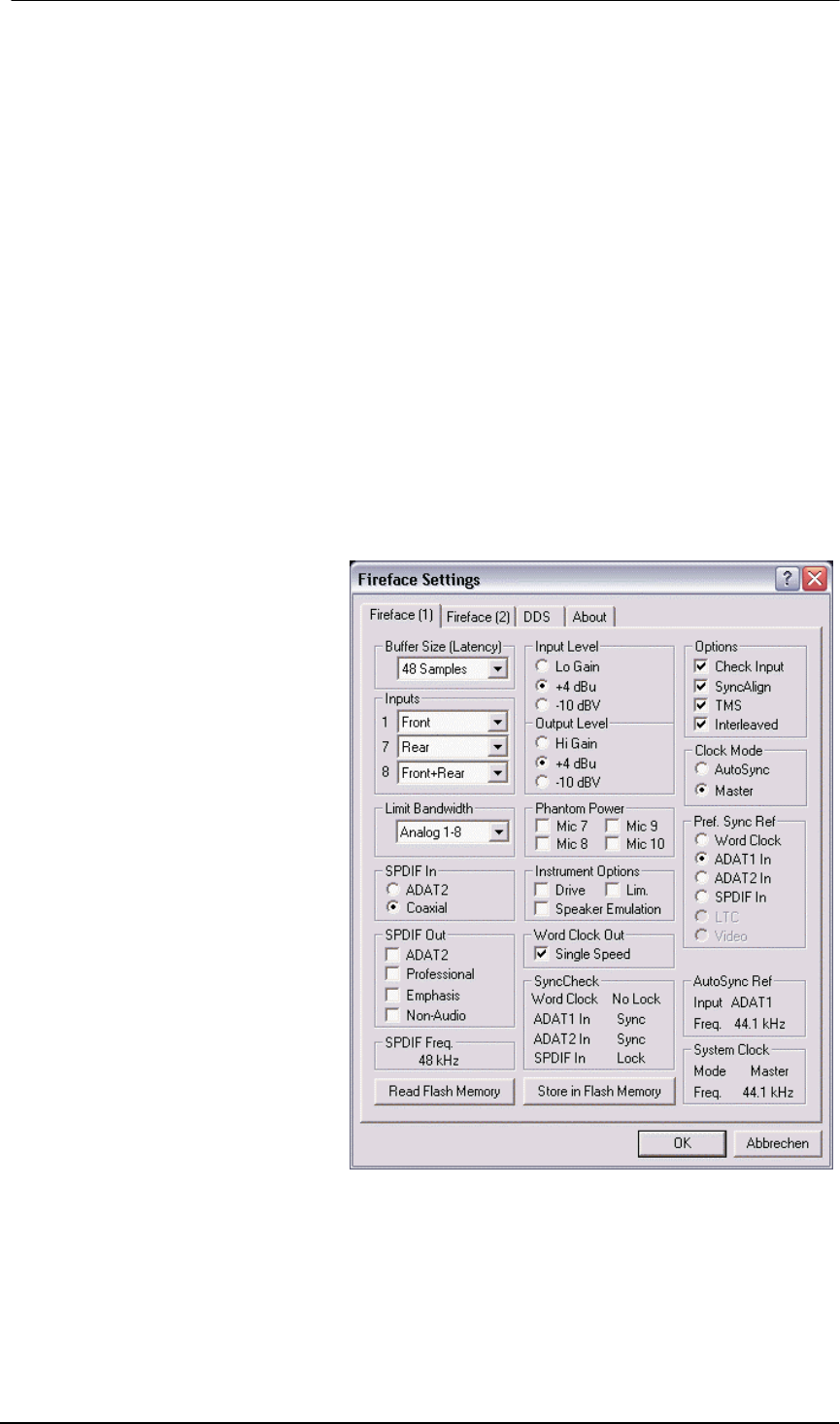
20
User's Guide Fireface 800 © RME
Word Clock Out
The word clock output signal usually equals the current sample rate. Selecting Single Speed
causes the output signal to always stay within the range of 32 kHz to 48 kHz. So at 96 kHz and
192 kHz sample rate, the output word clock is 48 kHz.
SyncCheck
SyncCheck indicates whether there is a valid signal (Lock, No Lock) for each input (Word clock,
ADAT1, ADAT2, SPDIF), or if there is a valid and synchronous signal (Sync). The AutoSync Ref
display shows the input and frequency of the current sync source.
Options
Check Input verifies the current digital input signal against the settings in the record program.
When de-activated a recording will always be allowed, even with non-valid input signals. Check
Input is valid for MME only.
SyncAlign guarantees synchronous channels when using MME multitrack software. This option
should only be switched off in case the used software does not work correctly with SyncAlign
activated.
TMS activates the transmission of Channel Status data and Track Marker information of the
SPDIF input.
With Interleaved activated, WDM devices can be used as 8-channel devices (see chapter 12.5).
Clock Mode
The unit can be configured to use its
internal clock source (Master), or the
clock source pre-defined via Pref.
Sync Ref (AutoSync).
Pref. Sync Ref.
Used to pre-select the desired clock
source. If the selected source isn't
available, the unit will change to the
next available one. The current clock
source and sample rate is displayed
in the AutoSync Ref display.
The automatic clock selection checks
and changes between the clock
sources Word Clock, ADAT1,
ADAT2, SPDIF, LTC and Video
(LTC/Video when using the optional
TCO module).
System Clock
Shows the current clock state of the
Fireface 800. The system is either
Master (using its own clock) or Slave
(see AutoSync Ref).
Read Flash Memory
A click on this button causes all settings to change to the ones stored in the flash memory of the
Fireface.
Store in Flash Memory
A click on this button transmits all current settings into the flash memory of the Fireface. Those
settings then become active directly after power-on, and also in stand-alone operation.


















